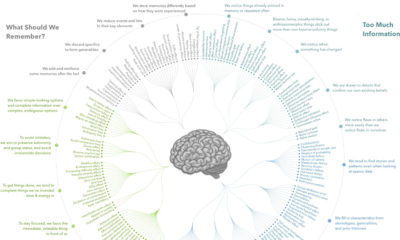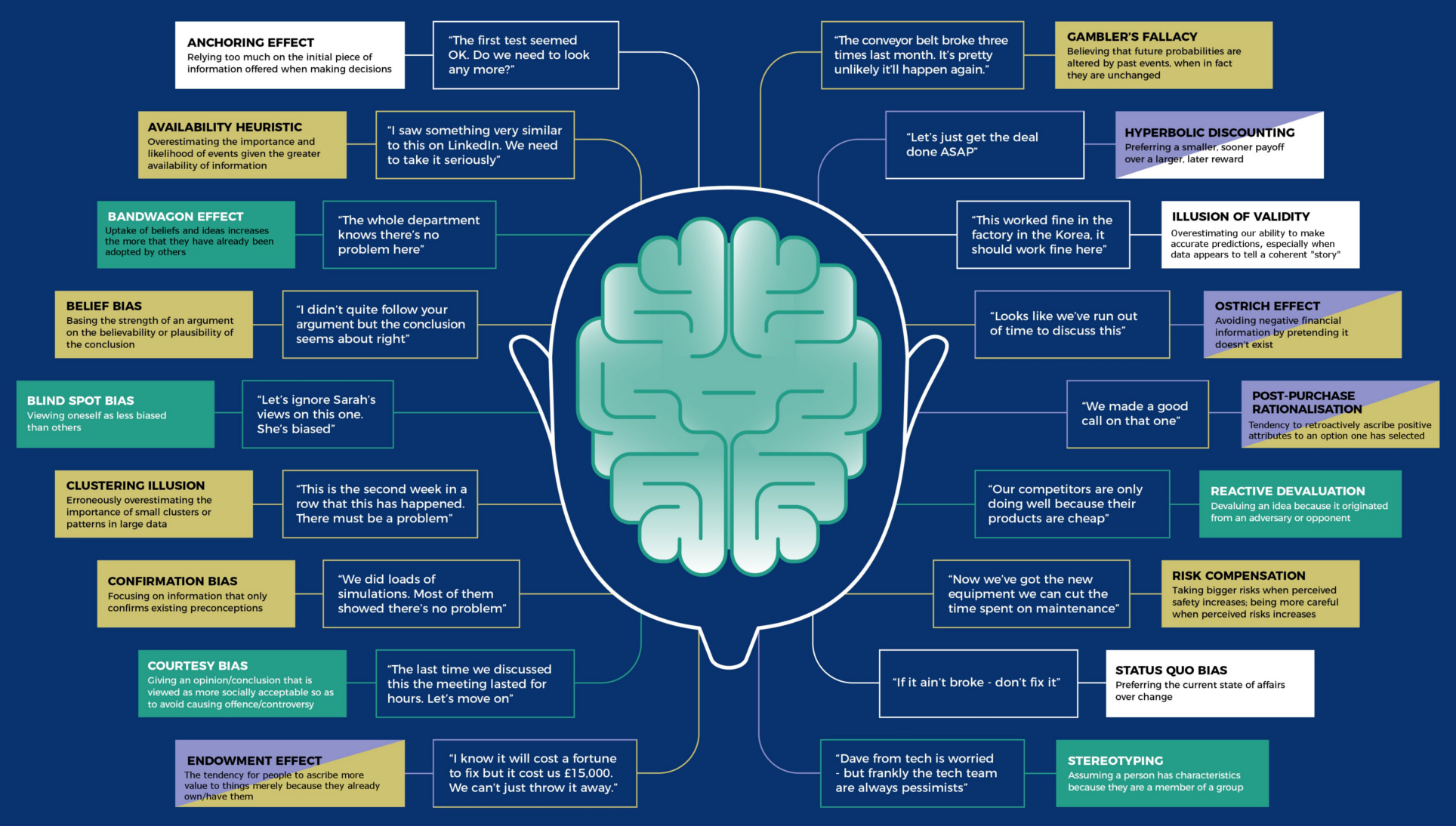Misc
7 Techniques to Help Improve Your Memory
Smartphones and the internet have changed just about everything, including our brains.
With limitless information at our fingertips, it’s no surprise that our ability to store and recall information has begun to atrophy. This mental reliance on technology is often referred to as the Google Effect.
A recent report suggested that 50% of people make no effort to recall information or seek answers from those around them before searching online. Also, two-thirds of consumers say that by letting their devices do the mental legwork, it enables them to achieve more.
How to Remember Anything
If devices are so good at storing our information and answering questions, why bother trying to remember anything at all? Experts warn that by not actively recalling information, we’re dooming ourselves to a future with fewer long-term memories and more difficulty retaining information in the short term.
Today’s infographic, from QuidCorner, lists some practical techniques to help you reclaim your short-term memory.

Whether you’re learning a new language or just trying to remember the access code to your office door, there are a few tricks that can help you more effectively remember information.
Memorization Techniques
LOCI
For more demanding memory tasks like speeches, visualize portions of information along a path you know well (e.g. the rooms of your home). This technique uses your navigation and spatial memory skills to help you recall pieces of information in a linear way.
LINKING
One technique that can help you memorize lists is called linking, or visualization and association. Linking plays to our natural inclination for understanding the world through storytelling. By mentally linking line items to one another in a creative way, you’ll be more likely to remember than if you simply tried to memorize the list.
CHUNKING
More complex pieces of information – long numbers, for example – are easier to remember when we break them into pieces.
A familiar example of “chunking” is the way telephone numbers are formatted. In the 1950s, Bell Laboratories teamed up with professor George A. Miller of Harvard University to gain insight into how we encode information into our long-term memory. In short, Miller’s research determined that the (555) 555-5555 format for displaying phone numbers was the most effective at allowing our brains to store contact information.
By organizing [information] into several dimensions and successively into a sequence or chunks, we manage to break (or at least stretch) this informational bottleneck.
-George A. Miller
A key takeaway to remember
Many of the techniques described above suggest triggering other parts of your brain to help form stronger memories. In this age of digital distraction, simply repeating information a few times is no match for mental visualization and adding meaningful context to information.
Remember that, and you’ll be able to remember almost anything.
Misc
Visualizing the Most Common Pets in the U.S.
Lions, tigers, and bears, oh my!—these animals do not feature on this list of popular American household pets.

Visualizing The Most Common Pets in the U.S.
This was originally posted on our Voronoi app. Download the app for free on iOS or Android and discover incredible data-driven charts from a variety of trusted sources.
In this graphic, we visualized the most common American household pets, based on 2023-2024 data from the American Pet Products Association (accessed via Forbes Advisor).
Figures represent the number of households that own each pet type, rather than the actual number of each animal. The “small animal” category includes hamsters, gerbils, rabbits, guinea pigs, chinchillas, mice, rats, and ferrets.
What is the Most Popular American Household Pet?
Based on this data, dogs—one of the first domesticated animals—are the most common pets in the United States. In fact, around 65 million households own a dog, and spend an average of $900 a year on their care.
| Rank | Species | Households |
|---|---|---|
| 1 | 🐶 Dog | 65M |
| 2 | 🐱 Cat | 47M |
| 3 | 🐟 Freshwater Fish | 11M |
| 4 | 🐰 Small Animals | 7M |
| 5 | 🐦 Bird | 6M |
| 6 | 🦎 Reptile | 6M |
| 7 | 🐴 Horse | 2M |
| 8 | 🐠 Saltwater Fish | 2M |
Note: Households can own multiple pets, and are counted for all relevant categories.
Cats rank second, at 47 million households, and these smaller felines are a little less expensive to own at $700/year according to Forbes estimates.
But aside from these two juggernauts, there are plenty of other common pet types found in households across the country.
Freshwater fish can be found in 11 million households, along with small animals—rabbits, hamsters, guinea pigs—in 7 million. Meanwhile, nearly 6 million homes have birds or reptiles.
Pet Ownership is on the Rise in America
Forbes found that 66% of all American households (numbering 87 million) own at least one pet, up from 56% in 1988. One third of these (29 million) own multiple pets.
A combination of factors is driving this increase: rising incomes, delayed childbirth, and of course the impact of the pandemic which nearly cleared out animal shelters across the globe.
America’s loneliness epidemic may also be a factor. Fledgling research has shown that single-individual households with pets recorded lower rates of loneliness during the pandemic than those without a pet.
-

 Science1 week ago
Science1 week agoVisualizing the Average Lifespans of Mammals
-

 Demographics2 weeks ago
Demographics2 weeks agoThe Smallest Gender Wage Gaps in OECD Countries
-

 United States2 weeks ago
United States2 weeks agoWhere U.S. Inflation Hit the Hardest in March 2024
-

 Green2 weeks ago
Green2 weeks agoTop Countries By Forest Growth Since 2001
-

 United States2 weeks ago
United States2 weeks agoRanked: The Largest U.S. Corporations by Number of Employees
-

 Maps2 weeks ago
Maps2 weeks agoThe Largest Earthquakes in the New York Area (1970-2024)
-

 Green2 weeks ago
Green2 weeks agoRanked: The Countries With the Most Air Pollution in 2023
-

 Green2 weeks ago
Green2 weeks agoRanking the Top 15 Countries by Carbon Tax Revenue






